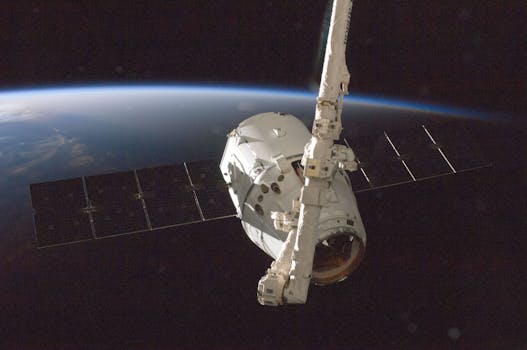From Geostationary to Low Earth Orbit: The Evolution of Satellite Telecommunications in 2023 – Satellite Telecommunications

From Geostationary to Low Earth Orbit: The Evolution of Satellite Telecommunications in 2023 – Satellite Telecommunications
Satellite telecommunications has undergone significant transformations in recent years, with a notable shift from geostationary to low Earth orbit satellites. This evolution has revolutionized the way we communicate, with improved connectivity, reduced latency, and increased accessibility. In this article, we will explore the history of satellite telecommunications, the benefits of low Earth orbit satellites, and the current state of the industry.
The first commercial telecommunications satellite, Intelsat 1, was launched in 1965 and operated in geostationary orbit. Geostationary satellites orbit the Earth at an altitude of approximately 36,000 kilometers, which allows them to maintain a fixed position relative to the Earth’s surface. This made them ideal for providing telecommunications services to a wide area, such as entire continents or oceans. However, geostationary satellites have some limitations, including high latency and limited bandwidth.
In recent years, there has been a shift towards low Earth orbit satellites, which operate at an altitude of around 160 to 2,000 kilometers. Low Earth orbit satellites have several advantages over geostationary satellites, including lower latency, higher bandwidth, and improved connectivity. They are also less expensive to launch and operate, making them a more attractive option for many telecommunications companies. One of the main benefits of low Earth orbit satellites is their ability to provide global coverage, including in areas where traditional telecommunications infrastructure is limited or non-existent.
The Benefits of Low Earth Orbit Satellites
Low Earth orbit satellites have several benefits that make them an attractive option for telecommunications companies. One of the main advantages is their low latency, which is typically around 20-30 milliseconds. This is significantly lower than geostationary satellites, which have a latency of around 200-300 milliseconds. Low Earth orbit satellites also have higher bandwidth, which makes them ideal for applications such as video streaming and online gaming.
Another benefit of low Earth orbit satellites is their improved connectivity. They are able to provide coverage to areas where traditional telecommunications infrastructure is limited or non-existent, making them ideal for rural or remote areas. Low Earth orbit satellites are also more secure than geostationary satellites, as they are less vulnerable to jamming and hacking.
Current State of the Industry
The satellite telecommunications industry is currently undergoing rapid growth and transformation. Several companies, including SpaceX, OneWeb, and Amazon’s Kuiper Systems, are launching constellations of low Earth orbit satellites to provide global telecommunications services. These constellations are expected to provide high-speed, low-latency internet connectivity to areas around the world, including in areas where traditional telecommunications infrastructure is limited or non-existent.
The growth of the satellite telecommunications industry is driven by increasing demand for global connectivity and the need for more reliable and secure telecommunications services. The industry is also driven by advances in technology, including the development of more efficient and cost-effective launch systems and the improvement of satellite manufacturing techniques.
Conclusion
In conclusion, the evolution of satellite telecommunications has transformed the way we communicate, with a shift from geostationary to low Earth orbit satellites. Low Earth orbit satellites have several benefits, including lower latency, higher bandwidth, and improved connectivity. The current state of the industry is characterized by rapid growth and transformation, driven by increasing demand for global connectivity and advances in technology. As the industry continues to evolve, we can expect to see even more innovative and reliable telecommunications services, including the development of new satellite constellations and the improvement of existing technologies.




